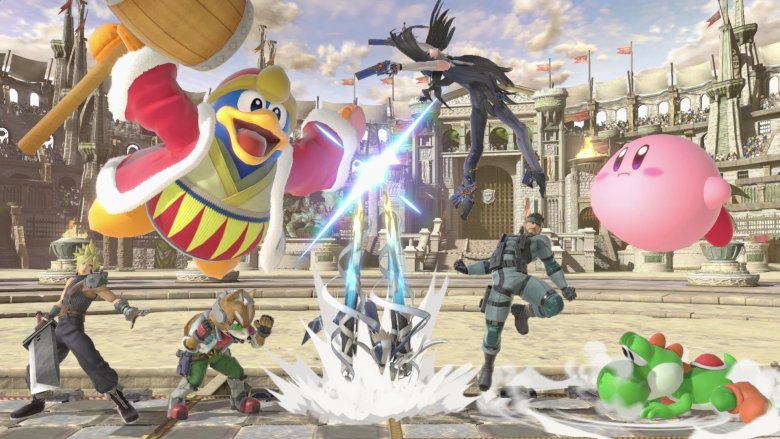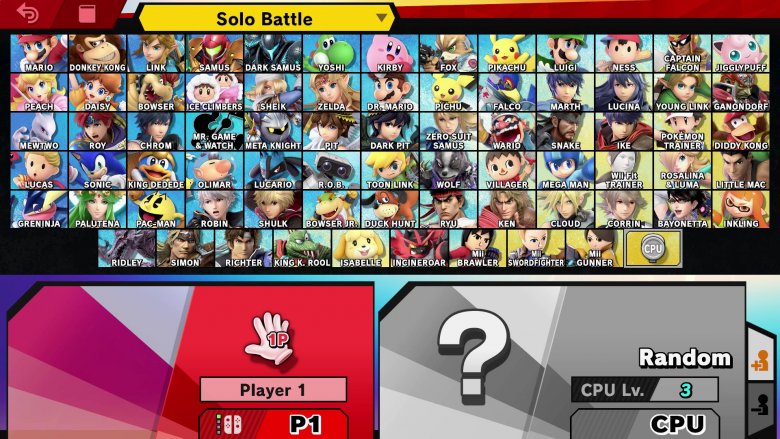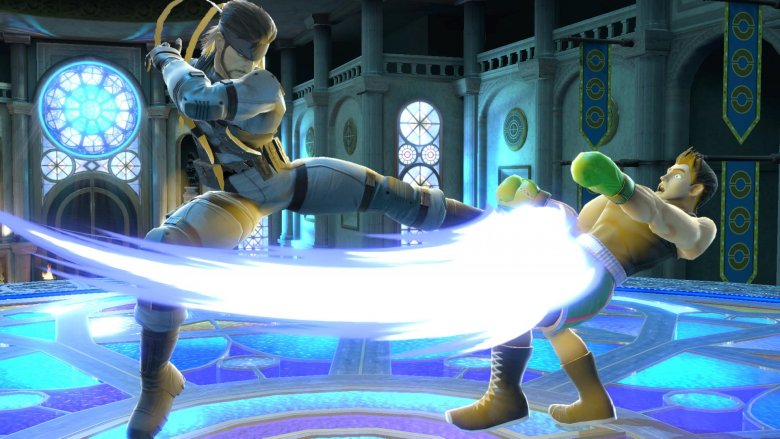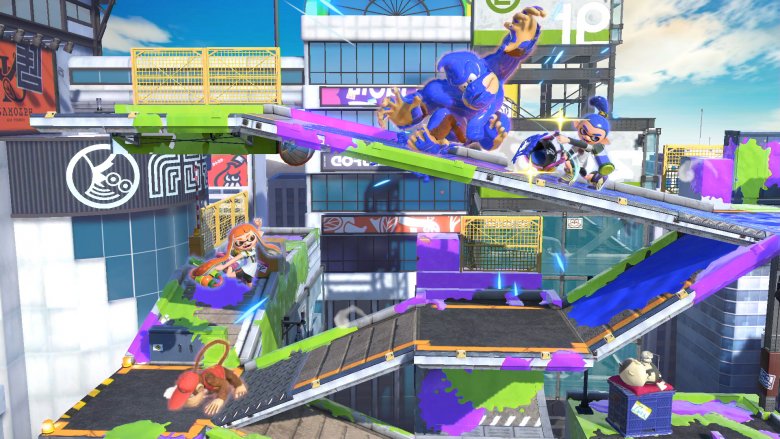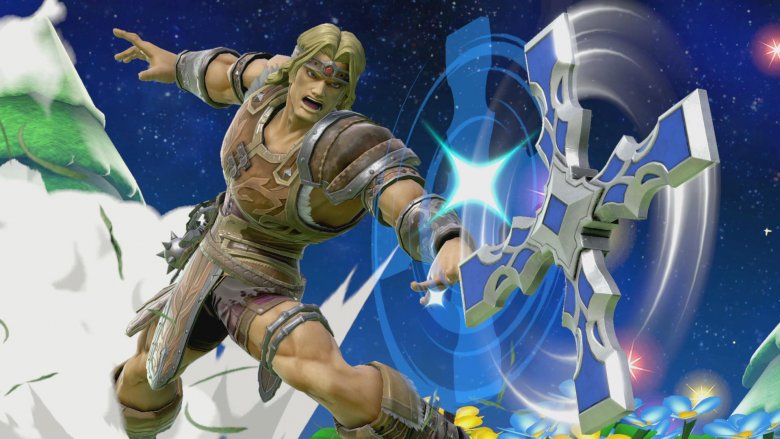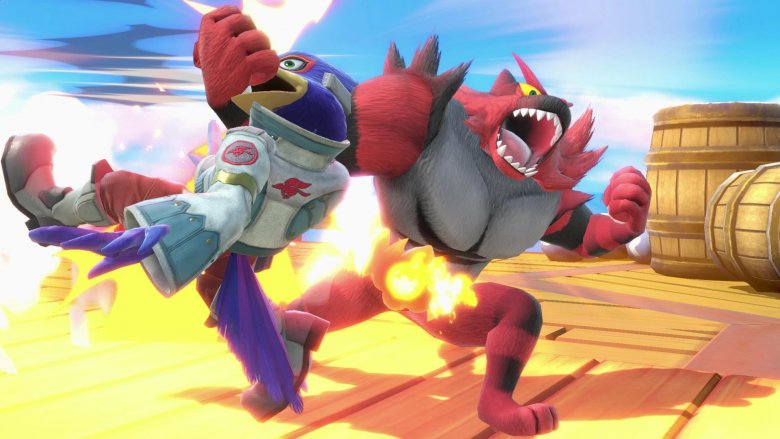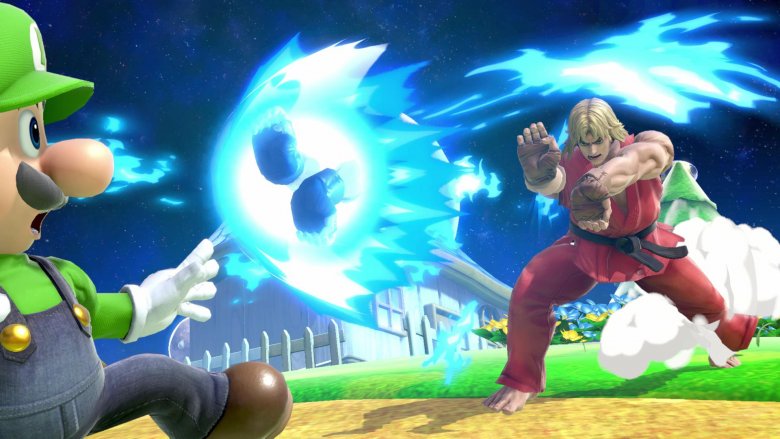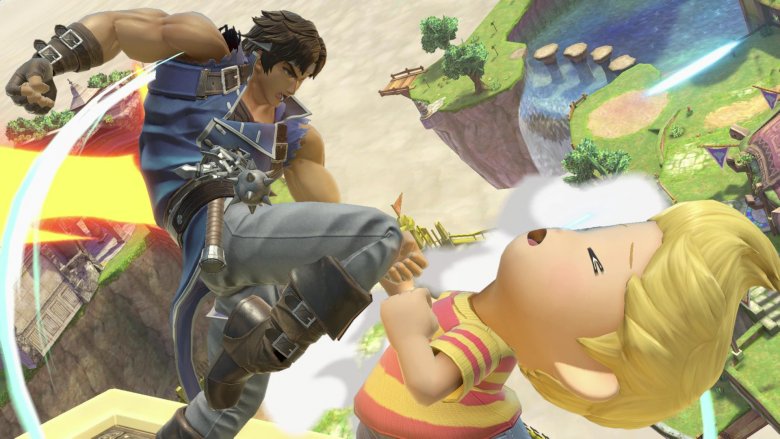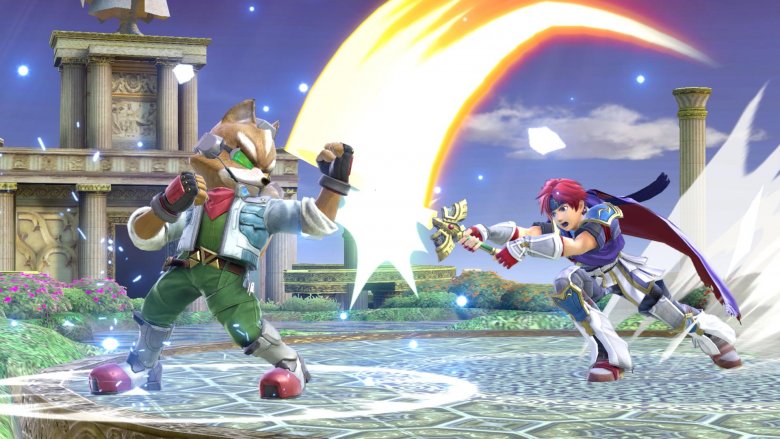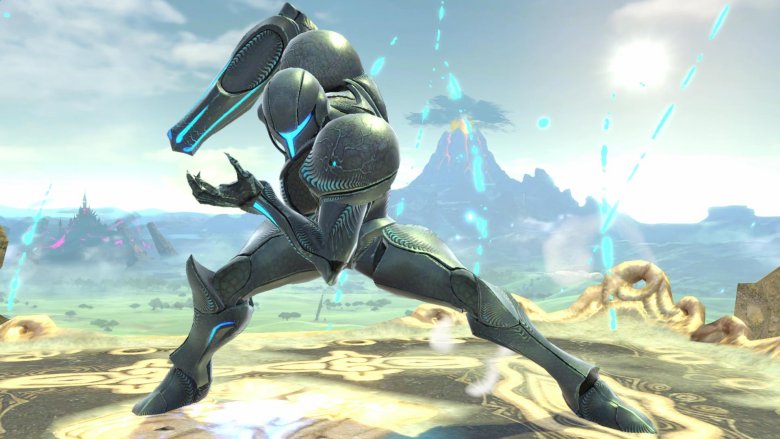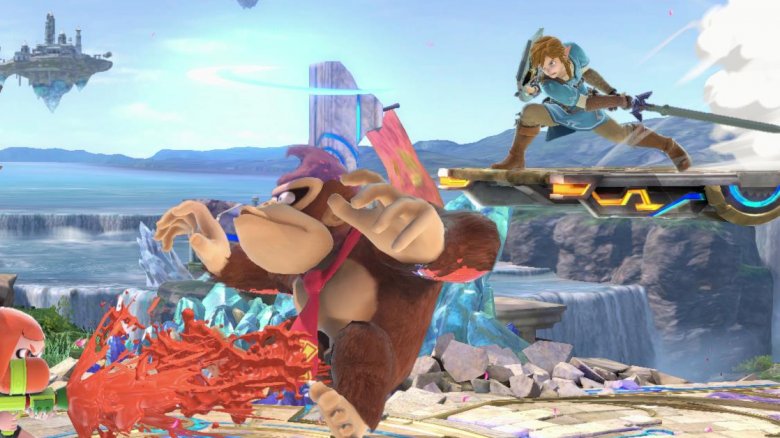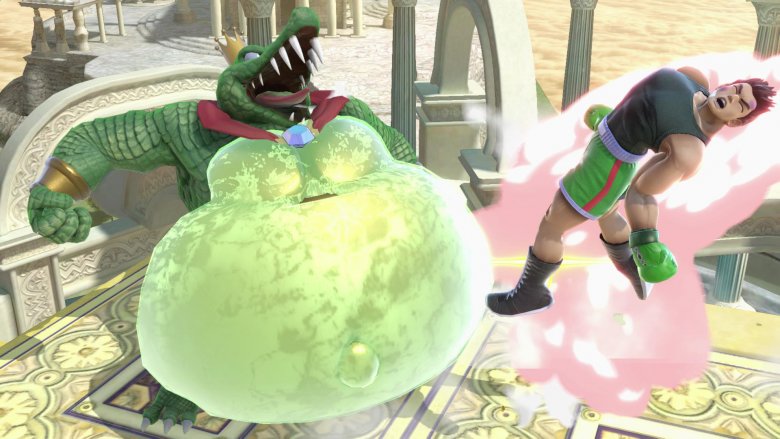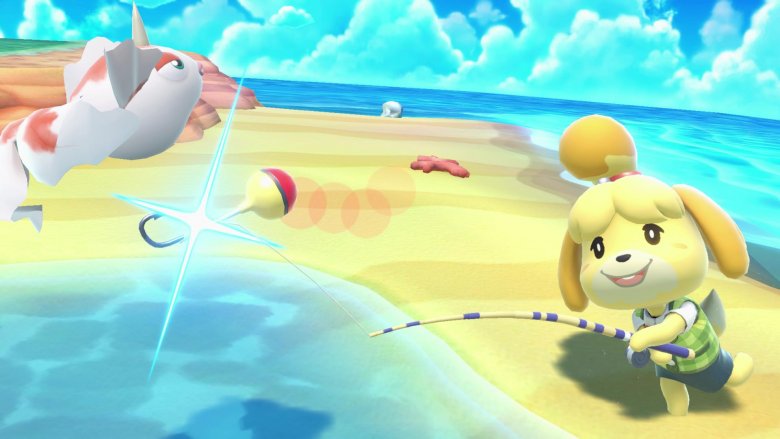Tips To Rock Your Way Through Super Smash Bros Ultimate
Super Smash Bros. Ultimate has meteor smashed its way onto the Nintendo Switch, and it has hyped both casual and hardcore fans alike. However, any major fan of the franchise knows that there's a lot more hidden under the hood. While you might have fond memories of Smash as a party game, many advanced mechanics lie in wait beyond the initial premise.
Smash presents itself as a fun time from the moment you pop the cartridge into your Switch. The simplistic control scheme makes it easy to pick up and enjoy, but if you want to improve your skills, you have to go beyond what the game teaches you. At the end of the day, Smash inherently identifies as a fighting game. Every move is measured by frames, and a variety of high-level play revolves around managing animations for maximum effect. Becoming the best player won't happen overnight, but it helps to understand the concept of frame data and how to execute some secret techniques.
Here we break down some of the most accessible secrets about Super Smash Bros. Ultimate to help make you a better player.
A full roster in half the time
First things first: the most vital part of any fighting game involves unlocking the entire roster of fighters. While it's good to have a main that you're most familiar with, understanding how other characters move and attack goes a long way to bettering yourself. Even knowing your opponent's moveset makes you an infinitely better fighter.
Unfortunately, 66 of the 74 characters stay hidden at the start, and they'll slowly be unlocked the more you play the game. Normally, when you finish playing a match, the "Challenger Approaching" screen appears, and whoever won the previous match has to fight the new character. Victory means earning the character's place on the roster. However, after that battle, the next one won't appear for another eight or ten minutes.
So if you're looking for a shortcut, look no further. After the challenger match, regardless of outcome, quit the game completely and restart it. Doing so resets the arbitrary timer for the next challenger to approach. Then play a quick one-stock match. After the match, another character should challenge you, giving you a chance to unlock them. Repeat the method until all 74 characters are yours.
Short hops are easier in Ultimate
Things start getting technical here, but this one is an easy concept to add to your repertoire. Jumping comes in two forms in Smash: short hops and full jumps. Short hops lend themselves to quick aerial attacks, and they're easier to do in Ultimate than they've ever been. Previously, every character had a short window after the jump animation started for players to release the jump button, turning the jump into a short hop. After successfully pulling off a short hop, you press attack to, well, attack.
In Ultimate, pressing the jump and attack buttons simultaneously not only produces a short hop but also adds an attack to it. The quick shortcut lowers the barrier of entry to executing perfect short hop attacks. You can also still do it the old fashioned way by quickly letting go of jump and then pressing attack, if you want.
The short hop attack is a vital tool for damaging opponents, either as a quick poke or as the start of a long combo. Unfortunately, short hops weaken your next attack by 15 percent, as opposed to the full damage of a jumping attack. Despite the weaker hit, no one can deny the utility of an easier short hop attack.
Everyone recovers from jumps faster than before
When a character lands on the ground, they go through a recovery animation before the player can control them again. This concept is called landing lag, and in high-level play, pro players punish it. So they rely on a technique called auto-canceling, which is landing during very specific frames of an aerial attack to bypass landing lag. The window is pretty tight for every animation, making auto-canceling one of the harder mechanics to master.
Luckily, Ultimate doesn't punish everyone as much for not auto-canceling. Instead, landing lag has been shortened across the board. This means that after landing on the ground, you can react to your opponent faster than before. The reduced landing lag serves as a huge buff to the heavier characters, like Bowser and Ganondorf, who can be riskier with their high-damage moves.
While on the subject of landing, Ultimate also lets you change the direction you're facing within the first few frames of landing lag. While this sounds like a small difference, the change creates a "faster" sensation for every character. It helps the game feel more responsive, which is vital for a fighting game.
Turning on a dime
Longtime Smash players know that you can't turn around once you're mid-air. Holding the opposite direction makes your character slowly move backwards rather than turn around. This can prove frustrating in a variety of situations. Recovering from off screen can be difficult, and reacting to quick enemies can be almost impossible. However, the B-reverse can turn the tide of battle.
The technique is simple enough to execute, and after a bit of practice, you'll be able to reliably use it in battle. The B-reverse quickly turns your character around right before they execute their neutral special. This technique works on the ground, but perhaps more importantly, it also works in the air. The B-reverse can be the difference between life and death when recovering from off screen, and in the midst of combat, it opens up your options when attacking from above.
To pull off the B-reverse, press B and then immediately move your stick to the opposite direction you're facing. Go to practice mode to nail down the timing, which can be a bit tricky at first. Once you can reliably B-reverse, your aerial game will be a force to be reckoned with.
Pivot cancels take your game farther, literally
Have you ever rushed toward an enemy to take a swing at them, only to wind up a few feet short? Most characters' running animations move quickly, but the second they swing a fist or launch a kick, that momentum disappears. That lost speed leaves you open to punishment while taking away an attack you meant to land. Fortunately, the pivot cancel solves all these problems.
Smash enthusiasts and pros found this technique weeks after Ultimate's launch, and it has proved to be a crucial part of certain characters' strategies. The pivot cancel carries most characters forward while executing a forward tilt attack, maintaining the running momentum. A tilt attack comes out when players lightly tilt the left stick in any direction while pressing attack. Players can toggle the C-stick to launch tilt attacks in the game's settings, which is highly recommended for those who want to learn the pivot cancel.
While running toward the enemy, flick the left stick in the opposite direction to start the pivot animation. This turns your character around, and letting the full animation play out leaves you vulnerable. However, instead of letting it play out, quickly launch a tilt attack in the direction you were initially running. This interrupts the pivot animation without losing the initial momentum, taking your tilt attack farther than before. The pivot cancel is important in setting up combos for certain characters, like Sheik and Little Mac.
Variety is the spice of Smash
While Smash can draw many parallels to more traditional fighting games, it runs against the grain in one major way. In most fighting games, beginners start by learning one combo they can reliably and accurately do. The rest of their strategy revolves around getting opponents into punishable positions for that combo. This method helps newcomers manage all the complexities of fighting games as they gain more experience.
Smash, however, outright discourages repetition. Stale-move negation penalizes players who use the same moves in rapid succession. Every time an attack is used without a different attack preceding it, it decays in damage and knockback. Using different moves slowly returns decayed attacks back to their fresh glory.
Stale-move negation serves a higher purpose beyond chastising repeat offenders. This mechanic encourages players to learn how to use various moves to maintain their damage potential. It forces players to be flexible from the start, making them constantly think of their options at every moment.
The intricacies of grabbing
At first, grabbing only seems like a way to counter enemies who shield often. And while that utility is extremely valuable, adding grabs to your repertoire varies your moveset, making you more unpredictable. That trait alone makes you a more formidable opponent. However, newer players may not know how to maximize the effectiveness of a grab, so here's a crash course.
While you can hit grabbed enemies, throwing them in any direction proves more valuable, especially when you know how to follow up. Most throws combo well into aerial hit strings, depending on the character. For example, Pikachu's down throw makes the opponent bounce off the ground. Depending on the trajectory of their bounce, a down special or up air follows nicely, tacking on that extra bit of damage.
However, if you're looking for the knockout, familiarize yourself with the back throw. The back throw has the most launch potential, making it the most viable throw to take a stock off your opponent. The back throw becomes especially useful when you're being pressured in the corner. With your back facing the endless void, a back throw could be the trump card that turns the battle in your favor.
The Ultimate defense
A good player balances their attack and defense, and there's one important defensive aspect in particular worth learning in Super Smash Bros. Ultimate. The perfect shield mechanic graced the franchise in its most recent installment, and it adds a whole new risk-versus-reward aspect when you go on the defensive.
Previously, the shield, roll, and air dodge rounded out the list of defensive maneuvers. While easy to break, the shield provides an all-round defense for when you can't avoid an attack. The roll gives you a quick burst of speed in one direction, with the initial frames of animation making you invincible. The air dodge is a similar principle but, obviously, in the air.
Now enter the perfect shield. The phenomenon occurs when you release the shield mere frames before an attack lands. You'll hear a sound effect and see a flash, both cues that you've parried your opponent. This slows the opponent down while allowing you to act instantly. Parrying comes with risks, considering that messing up the timing leads to you getting hit, but a successful parry can change a battle.
(Don't) keep rollin', rollin', rollin', rollin'
Building a solid defensive strategy is part of becoming a better player. Each evaded attack helps you understand how your opponent fights, allowing you to adjust your strategy. After all, winning any fighting game involves exploiting your opponent's mistakes. However, you don't want to lean too much on your evasive actions at the risk of getting punished yourself.
Smash thrives on variety. The 74 characters and 103 stages at launch both stand as testaments to the number of options the game gives you. The game also punishes repetitive gameplay with stale-move negation and roll-speed decay.
Similarly, repeated dodge rolls become slower and more punishable upon each iteration. The speed of a dodge roll can make or break its effectiveness, especially since only the first few frames are invincible. On top of that, grabs take priority over every frame of a roll. If your evasive maneuvers degrade to the point where you're leaving a full second for the opponent to take advantage, it might be time to lean on your shield or start going on the offensive.
Link finally found the real Master Sword
The Legend of Zelda protagonist Link makes his return in Smash, in three different iterations no less. The original Link is based on his design and skill set in 2017's Breath of the Wild, the celebrated Switch launch title. Link sees many changes in Smash, the most obvious being his blue tunic instead of the familiar green (although that's an option as well). His bombs now glow blue, and they detonate at his discretion rather than via a timer.
A well-hidden change that many might not notice, however, involves his iconic blade. The Master Sword plays a vital role in a majority of Zelda titles, often being the key to banishing the evil that plagues the land. Historically, the sword launches a blade-shaped projectile whenever Link is at full health. This concept hasn't been explored in previous Smash titles, but Ultimate finally introduces it to his repertoire. Now when Link is at zero percent — Smash's equivalent of full health — his forward smash also launches a beam. The extra damage isn't crucial to his strategy, but it's a neat addition that can change Link's early game.
A K. Rool, K. Rool world
King K. Rool stands as the most recent fighter to join the roster. Those who haven't played any Donkey Kong games might not be familiar with the villain, but his moveset has made waves in the Smash community. His up special gives him a lot of recovery, and a slew of his moves hit really hard with high launch potential.
Perhaps what makes K. Rool a frightening adversary, however, involves the gold armor on his stomach. A whopping seven of his attacks gain super armor before they hit, making him nigh invulnerable during most of his windups. Even one of his taunts benefits from this super armor! Take, for example, his forward tilt. During the animation, he winds back his arms and then claps them together, damaging anyone in front of him. If an opponent hits his stomach while his arms are back, he takes half the damage without flinching, and then immediately responds with the aforementioned clap.
It can be frustrating to deal with, but you should know that his armor can break. The gold armor has its own health bar, and it soaks up 14.01 damage. Remember though, that the armor takes half the damage you do to K. Rool. Additionally, it regenerates roughly 0.3 health per second. Once the armor is broken, K. Rool flinches and goes into a dazed state, leaving him open to whatever attack you want to give him.
Fishing for clones
Everyone's favorite dog assistant, Isabelle, also joins the fray in Ultimate. As expected, her moveset mimics the Villager's, with many of their attacks functioning fairly similarly. She is the Villager's echo fighter, after all. However, Isabelle has also been the center of a few glitches in the game. One of the more amusing ones involves being stuck in a loop, constantly spawning infinite copies of an assist trophy.
Assist trophies already have a powerful function in Smash, often affecting the match enough to change the status quo. Some trophy characters aggressively attack everyone but the person who picked up the trophy. Others affect everyone's vision of the action, like the cursed Nintendog. Isabelle, scarily enough, can fall into an infinite loop and summon an endless number of whatever assist trophy she picks up.
The glitch only happens when there are two Isabelles in a match. Her side special makes her cast a line with her fishing rod, and when it catches an opponent or item, she reels them in. When two Isabelles cast their lines and grab an assist trophy at slightly different times, the first one will get it. Then she'll never stop spawning the character in the assist trophy until she's hit again. This insidious glitch might never be replicated in actual matches, but it's a fun strategy to go for during casual team matches.

